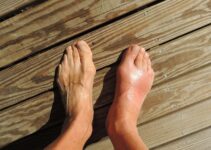Do you suffer from persistent pain and stiffness in your shoulders, neck, and hips? Polymyalgia rheumatica (PMR) may be the culprit. This uncommon type of arthritis primarily affects individuals over the age of 50.
But don’t worry, there’s hope! By understanding the symptoms, seeking proper diagnosis, and exploring treatment options, you can manage the pain and regain control of your life.
In this article, we’ll guide you through the world of PMR and provide valuable resources to support you on your journey.
Understanding Polymyalgia Rheumatica
You should definitely read this article to better understand the symptoms and treatment options for polymyalgia rheumatica. If you’re someone who desires serving others, it’s important to have knowledge about this uncommon type of arthritis.
Polymyalgia rheumatica mainly affects individuals who are over the age of 50, with a higher prevalence seen in women. The exact cause of this condition is unknown, but it’s believed to be related to the immune system.
When it comes to treatment options, there are a few different approaches. The main goal is to reduce inflammation and manage pain. Nonsteroidal anti-inflammatory drugs (NSAIDs) are commonly used to alleviate symptoms. In some cases, corticosteroids may be prescribed to help control inflammation. Physical therapy and regular exercise can also be beneficial in managing the symptoms of polymyalgia rheumatica.
It’s important to consult with a healthcare professional to determine the best treatment plan for you. By understanding the prevalence data and treatment options for polymyalgia rheumatica, you can better support and serve those who may be affected by this condition.
Prevalence and Risk Factors
There are several risk factors associated with polymyalgia rheumatica, including age and gender. Polymyalgia rheumatica is more commonly seen in individuals above the age of 50, and it affects women more frequently than men. However, it’s important to note that anyone can develop this condition, regardless of their age or gender.
When it comes to prevalence data, polymyalgia rheumatica is considered to be a relatively uncommon type of arthritis. According to recent studies and risk factor analysis, it’s estimated that this condition affects approximately 1 in every 1,000 individuals over the age of 50. Although the prevalence may seem low, it’s still important to be aware of the symptoms and risk factors associated with polymyalgia rheumatica.
Understanding the risk factors can help in early detection and management of this condition. In addition to age and gender, certain genetic factors may also contribute to the development of polymyalgia rheumatica. It’s important to remember that while these risk factors may increase your chances of developing the condition, they don’t guarantee it.
If you’re experiencing symptoms such as muscle pain and stiffness, especially in the shoulders and hips, it’s important to consult with a healthcare professional for a proper diagnosis and treatment. Early detection and appropriate management can help in minimizing the impact of polymyalgia rheumatica on your daily life.
Recognizing the Symptoms
To recognize the symptoms of polymyalgia rheumatica, pay attention to persistent pain and stiffness in your shoulders, upper arms, neck, and hips.
You may also experience fatigue, low-grade fever, and unexplained weight loss.
Recognizing these symptoms is crucial because they can help guide the diagnostic process and differentiate polymyalgia rheumatica from other conditions with similar symptoms.
Common Symptoms Explained
Feeling stiffness in your joints upon waking up is a common symptom of polymyalgia rheumatica. It’s important to understand that this condition isn’t as prevalent as other types of arthritis, but it can still cause significant discomfort and affect your daily activities.
Polymyalgia rheumatica primarily affects individuals over the age of 50, with women being more susceptible. When it comes to treatment options, your healthcare provider may prescribe low-dose corticosteroids to help manage the inflammation and reduce pain. Physical therapy and regular exercise can also play a vital role in maintaining joint flexibility and mobility.
It’s crucial to have an open conversation with your healthcare provider to discuss the best treatment plan for you, as everyone’s needs may vary. Remember, taking care of yourself and seeking appropriate treatment will help you regain control over your daily life.
Diagnostic Challenges and Tests
You should undergo a series of diagnostic tests, such as blood tests and imaging scans, to accurately identify and address the challenges associated with polymyalgia rheumatica.
Diagnostic difficulties and misdiagnosis challenges can make it challenging to properly diagnose polymyalgia rheumatica. However, these tests can provide valuable information to help guide your treatment plan.
Blood tests can help identify markers of inflammation, such as elevated levels of C-reactive protein and erythrocyte sedimentation rate. Imaging scans, such as ultrasound or MRI, can help visualize any inflammation or damage to the affected joints.
Additionally, your doctor may recommend a temporal artery biopsy to rule out other conditions with similar symptoms.
Differentiating From Other Conditions
If you experience both severe stiffness and pain in your shoulders and hips, along with fatigue and weight loss, it’s important to consult a healthcare professional to differentiate polymyalgia rheumatica from other conditions like rheumatoid arthritis or fibromyalgia. Misdiagnosis challenges can arise due to the similarities in symptoms, making it crucial to consider other potential differential diagnoses.
Here are four important factors to keep in mind when differentiating polymyalgia rheumatica from other conditions:
- Age: Polymyalgia rheumatica typically affects individuals over the age of 50, while rheumatoid arthritis and fibromyalgia can occur at any age.
- Blood tests: Certain blood markers, such as erythrocyte sedimentation rate (ESR) and C-reactive protein (CRP) levels, can be elevated in polymyalgia rheumatica.
- Pattern of pain: Polymyalgia rheumatica primarily affects the shoulders and hips, whereas rheumatoid arthritis and fibromyalgia may involve other joints as well.
- Response to treatment: Polymyalgia rheumatica often responds well to low-dose corticosteroids, while other conditions may require different treatment approaches.
The Diagnostic Process
You’ll need to provide your doctor with a detailed medical history during the diagnostic process for polymyalgia rheumatica. This uncommon type of arthritis can cause widespread muscle pain, stiffness, and inflammation, primarily affecting the shoulders, neck, and hips. To accurately diagnose polymyalgia rheumatica, doctors rely on specific diagnostic criteria. These criteria include age over 50, new-onset bilateral shoulder pain, morning stiffness lasting longer than 45 minutes, and elevated markers of inflammation. By sharing your medical history, you can help your doctor determine if these criteria apply to you.
Once diagnosed, treatment options for polymyalgia rheumatica aim to manage symptoms and prevent complications. The most common treatment is a low dose of oral corticosteroids, such as prednisone. These medications can effectively reduce inflammation and alleviate pain. However, long-term use of corticosteroids may have side effects, so your doctor will work with you to find the lowest effective dose. In some cases, other medications like nonsteroidal anti-inflammatory drugs (NSAIDs) or disease-modifying antirheumatic drugs (DMARDs) may be used in combination with corticosteroids.
Treatment Approaches and Medications
Your doctor will discuss the various treatment approaches and medications available for managing polymyalgia rheumatica. Here are four key points you should know about the treatment options and alternative therapies:
- Medications: Your doctor may prescribe corticosteroids, such as prednisone, to reduce inflammation and relieve pain. These medications can be very effective in managing the symptoms of polymyalgia rheumatica. However, long-term use of corticosteroids may have side effects, so your doctor will carefully monitor your dosage and recommend the lowest effective dose.
- Physical therapy: Engaging in regular physical therapy can help improve flexibility, increase muscle strength, and reduce pain. Your physical therapist will design a personalized exercise program tailored to your specific needs and abilities.
- Lifestyle modifications: Making certain lifestyle changes can also help manage your symptoms. Your doctor may recommend maintaining a healthy weight, eating a balanced diet, getting regular exercise, and managing stress. These lifestyle modifications can improve your overall well-being and reduce the severity of your symptoms.
- Alternative therapies: Some individuals find relief from polymyalgia rheumatica symptoms through alternative therapies, such as acupuncture or herbal supplements. However, it’s important to discuss these options with your doctor before trying them, as they may not be suitable for everyone and could interact with other medications you’re taking.
Managing Pain and Stiffness
To effectively manage pain and stiffness, try incorporating regular stretching exercises into your daily routine and make sure to also take breaks throughout the day to rest and relax. Pain management is crucial for those dealing with conditions like arthritis or other chronic pain conditions. While medications can provide relief, it’s also important to explore alternative therapies to complement your treatment plan.
Alternative therapies can offer additional support in managing pain and stiffness. Techniques such as acupuncture, massage therapy, and yoga have shown promising results in reducing pain and improving mobility. Acupuncture, for example, involves the insertion of thin needles into specific points on the body to stimulate the release of endorphins, which are natural pain relievers. Massage therapy can help relax muscles, reduce tension, and improve circulation, while yoga combines gentle stretching with deep breathing to enhance flexibility and promote relaxation.
In addition to alternative therapies, lifestyle modifications can also play a significant role in pain management. Maintaining a healthy diet, getting regular exercise, and practicing stress management techniques can all contribute to reducing pain and improving overall well-being. It’s important to find a balance between activity and rest, as overexertion can worsen pain and stiffness.
Remember to consult with your healthcare provider before starting any new exercise or alternative therapy. They can help determine the best approach for your individual needs and ensure proper pain management. By incorporating regular stretching exercises, exploring alternative therapies, and making healthy lifestyle choices, you can take an active role in managing your pain and stiffness.
Lifestyle Modifications for PMR
To manage your PMR symptoms, you can make some lifestyle modifications.
Regular exercise, such as gentle stretching or low-impact activities like swimming or walking, can help improve your joint flexibility and reduce stiffness.
Making dietary changes, like incorporating anti-inflammatory foods and reducing processed foods, can also support your overall health and manage PMR symptoms.
Additionally, practicing stress management techniques, such as meditation or deep breathing exercises, can help reduce stress levels and alleviate PMR symptoms.
Exercise for PMR
Stay consistent with your exercise routine to maintain flexibility and strength while managing PMR. Regular exercise has numerous benefits for individuals with Polymyalgia Rheumatica (PMR).
Here are four recommended exercises that can help alleviate symptoms and improve overall well-being:
- Stretching: Incorporate gentle stretching exercises into your routine to improve flexibility and reduce stiffness in your muscles and joints.
- Strength Training: Engage in resistance exercises to build muscle strength and support your joints. Start with light weights and gradually increase as tolerated.
- Aerobic Activities: Participate in low-impact exercises such as walking, swimming, or cycling to improve cardiovascular health and enhance endurance.
- Balance and Coordination Exercises: Focus on activities that promote balance and coordination, such as yoga or tai chi, to reduce the risk of falls and improve overall stability.
Remember, always consult with your healthcare provider before starting any new exercise program, and listen to your body’s limits to prevent injury.
Stay committed to your exercise routine, and experience the positive impact it can have on managing PMR.
Dietary Changes for PMR
Make sure to incorporate at least three servings of fruits and vegetables into your daily diet to support your overall health and manage symptoms of Polymyalgia Rheumatica (PMR).
When dealing with PMR, it’s important to make dietary changes that align with your specific needs and restrictions. While there are no specific dietary restrictions for PMR, it’s recommended to avoid processed foods and reduce your intake of salt and sugar.
Additionally, incorporating nutritional supplements such as omega-3 fatty acids, turmeric, and vitamin D may help in managing inflammation and joint pain associated with PMR.
Stress Management Techniques
Try incorporating deep breathing exercises and regular physical activity into your daily routine in order to effectively manage stress associated with Polymyalgia Rheumatica. Stress can exacerbate the symptoms of this uncommon type of arthritis, but there are relaxation techniques and coping strategies that can help you find relief.
Here are four techniques to consider:
- Deep breathing exercises: Practice deep, slow breaths to activate your body’s relaxation response and reduce stress levels.
- Regular physical activity: Engage in low-impact exercises like walking or swimming to improve your overall well-being and reduce stress.
- Mindfulness meditation: Take time each day to focus on the present moment and cultivate a sense of peace and calm.
- Social support: Reach out to friends, family, or support groups to share your experiences and find comfort in knowing you aren’t alone.
Potential Complications and Long-Term Outlook
You should be aware of the potential complications and long-term outlook of polymyalgia rheumatica.
Polymyalgia rheumatica is an uncommon type of arthritis that primarily affects older adults. It’s characterized by widespread muscle pain and stiffness, particularly in the shoulders, neck, and hips. While the exact cause of polymyalgia rheumatica is unknown, it’s believed to be an autoimmune disorder.
Complications management plays a crucial role in the treatment of polymyalgia rheumatica. If left untreated or poorly managed, this condition can lead to several complications. One of the most common complications is the development of giant cell arteritis, a condition that causes inflammation of the blood vessels. Giant cell arteritis can lead to vision problems, including blindness, if not promptly treated. Other complications may include osteoporosis, muscle weakness, and depression.
The long-term prognosis for polymyalgia rheumatica varies from person to person. With appropriate treatment and management, most individuals experience a significant improvement in their symptoms within a few weeks or months. However, some individuals may have a more prolonged course of the disease and may require long-term treatment to manage their symptoms effectively.
It’s essential to work closely with your healthcare provider to develop a personalized treatment plan and monitor any potential complications to ensure the best possible long-term outcome.
Support and Resources for PMR Patients
Explore the available support and resources to better manage your polymyalgia rheumatica and connect with others who understand your experience. Living with polymyalgia rheumatica (PMR) can be challenging, but you don’t have to face it alone. There are support groups and alternative therapies that can help you navigate this condition and improve your quality of life.
Here are four key resources and strategies to consider:
- Support Groups: Joining a support group can provide you with a sense of community and understanding. Interacting with others who are going through similar challenges can be empowering and comforting. You can share your experiences, exchange tips and coping strategies, and find emotional support.
- Educational Resources: Take advantage of educational resources available online or through healthcare providers. These resources can provide valuable information about PMR, its symptoms, treatment options, and self-care strategies. Being well-informed about your condition can help you make informed decisions about your health.
- Alternative Therapies: Explore alternative therapies such as acupuncture, massage, and yoga. These therapies may help alleviate pain, reduce inflammation, and improve flexibility. Always consult with your healthcare provider before trying any alternative therapy to ensure it’s safe for you.
- Online Forums and Communities: Engaging in online forums and communities dedicated to PMR can connect you with individuals who’ve firsthand experience with the condition. These platforms offer a space for asking questions, seeking advice, and sharing your journey with others who truly understand.
Frequently Asked Questions
How Does Polymyalgia Rheumatica Affect Daily Activities and Quality of Life?
Polymyalgia rheumatica can greatly impact your daily activities and quality of life. It can limit your mobility and make it difficult to perform simple tasks. However, with coping strategies, you can find ways to manage and improve your situation.
Are There Any Alternative or Complementary Treatments for Polymyalgia Rheumatica?
There are alternative therapies and complementary approaches that can help manage polymyalgia rheumatica. These options can be used alongside traditional treatments to improve your symptoms and enhance your overall quality of life.
Can Polymyalgia Rheumatica Lead to Other Autoimmune Diseases?
“Can polymyalgia rheumatica lead to other autoimmune diseases?” Polymyalgia rheumatica may not directly cause other autoimmune diseases, but genetic predisposition and the inflammation it causes can increase the risk of developing other autoimmune conditions.
How Long Does the Typical Treatment for Polymyalgia Rheumatica Last?
The typical treatment duration for polymyalgia rheumatica can vary, but it often lasts for several months to a couple of years. With proper management, the long-term prognosis is generally favorable.
Are There Any Specific Dietary Recommendations for Managing Polymyalgia Rheumatica Symptoms?
Managing polymyalgia rheumatica symptoms through dietary management involves incorporating natural remedies. While there are no specific dietary recommendations, a balanced diet with anti-inflammatory foods and avoiding trigger foods can help alleviate symptoms and improve overall well-being.






